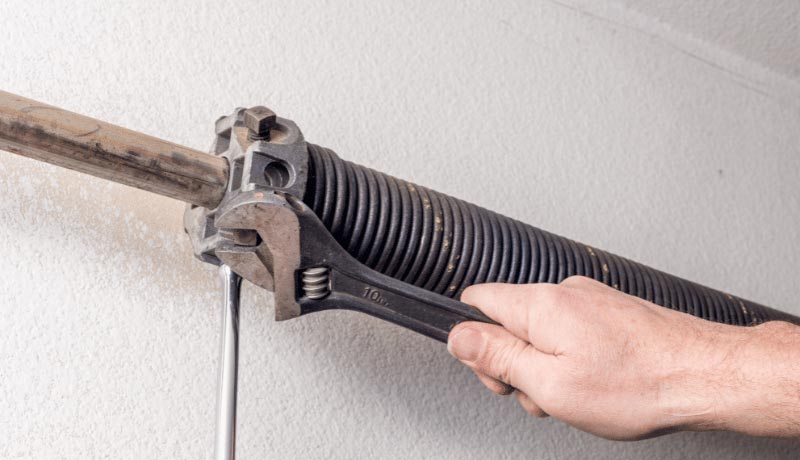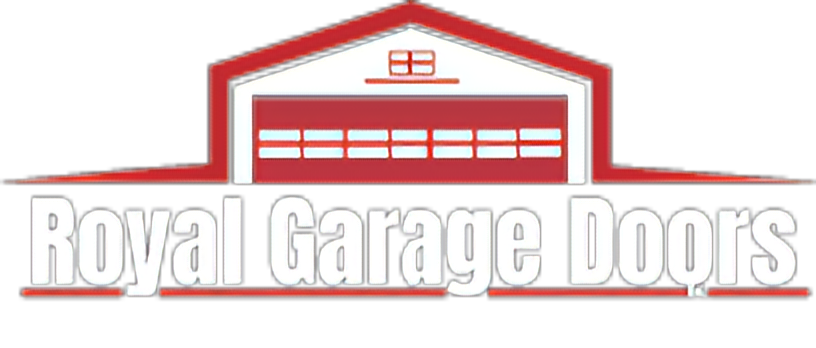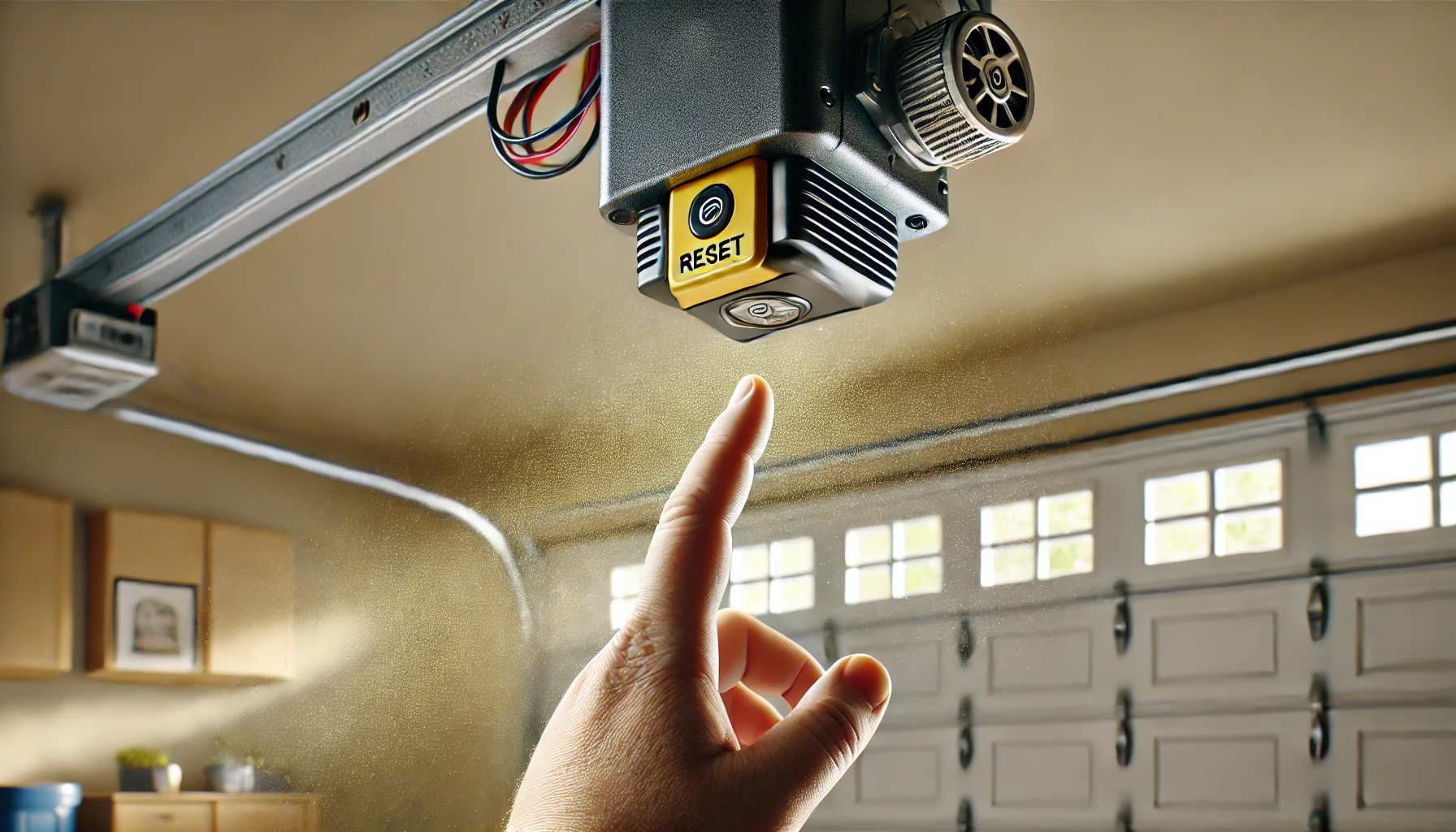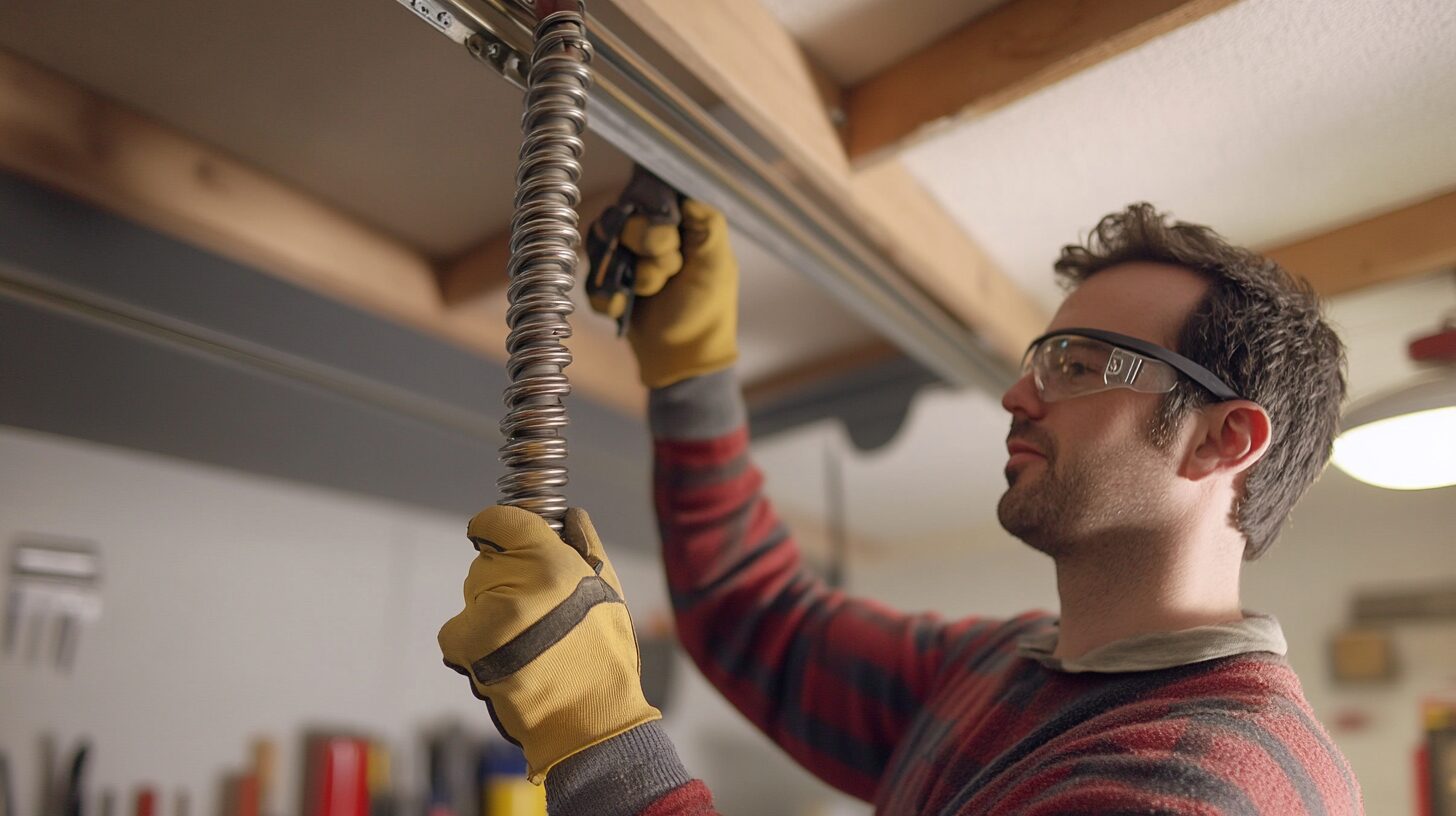Garage door torsion springs play a crucial role in the proper operation of your garage door. These tightly wound coils of metal store and release energy to help lift and lower the door. While torsion springs are designed to be resilient and long-lasting, they can wear out over time and eventually need to be replaced. In this blog post, we’ll explore some of the most common signs that your garage door torsion springs need to be replaced, and provide tips on how to ensure safe and reliable operation of your garage door.
How Garage Door Torsion Springs Work

Garage door torsion springs are tightly wound coils of metal that store and release energy as the garage door moves. When the door is closed, the springs are under tension and store energy. As the door is opened, the stored energy is released, which helps to lift the door.
Torsion springs work by twisting or torsion, hence their name. The spring is attached to a stationary metal shaft, which is secured to the garage door frame. The other end of the spring is attached to a drum that is mounted on the shaft. As the garage door is opened or closed, the drum and the spring rotate, which causes the spring to twist and store energy. When the door is opened, the spring unwinds and releases the stored energy, which lifts the door.
Different Types of Torsion Springs Available
Torsion springs come in a variety of sizes and strengths to accommodate different garage door weights and sizes. These springs are typically made of steel or a steel alloy, which can withstand high levels of tension and compression without deforming or breaking.
There are two main types of torsion springs: standard and high-cycle. Standard torsion springs are designed for use in garage doors that are opened and closed fewer than 10,000 times per year. High-cycle torsion springs, on the other hand, are designed for use in garage doors that are opened and closed more than 10,000 times per year.
Signs to Watch Out for on Your Torsion Springs
- Difficulty Opening or Closing the Door: One of the most obvious signs that your garage door torsion springs are failing is difficulty opening or closing the door. If you notice that your garage door is suddenly harder to lift or lower than usual, or that it seems to get stuck or move unevenly, it could be a sign that the torsion springs are no longer providing enough force to move the door smoothly.
- Noisy Garage Door: Another common sign that your garage door torsion springs need to be replaced is excessive noise. If you hear loud banging or squeaking noises when you open or close your garage door, it could be a sign that the torsion springs are worn out and need to be replaced.
- Visible Damage or Wear on the Springs: Over time, torsion springs can become damaged or worn out due to the stress of lifting and lowering your garage door. If you notice that your torsion springs are visibly damaged or worn, such as if they are rusted, bent, or have gaps in the coils, it’s a clear indication that they need to be replaced.
- Uneven Door Movement: If you notice that your garage door moves unevenly or wobbles as it opens or closes, it could be a sign that the torsion springs are not providing enough force to lift the door evenly. This can cause the door to become unstable and potentially dangerous to operate.
- Age of the Torsion Springs: Finally, the age of your torsion springs can be a good indicator of when they need to be replaced. Most torsion springs have a lifespan of around 10,000 cycles (open and close operations) or 7-10 years, whichever comes first. If your garage door torsion springs are approaching or have exceeded this lifespan, it’s a good idea to have them inspected and replaced by a professional.
Proper Maintenance for Garage Door Torsion Springs

Proper maintenance of your garage door torsion springs can help to extend their lifespan and prevent costly repairs or replacements. One of the best ways to maintain your springs is to lubricate them regularly. This helps to reduce friction and wear on the springs and the other moving parts of the garage door system.
To lubricate your torsion springs, use a silicone-based spray or lubricant, which is less likely to attract dirt and debris than oil-based lubricants. Apply the lubricant to the springs and other moving parts of the garage door system, such as the rollers, hinges, and tracks.
Conclusion
In conclusion, garage door torsion springs are an essential component of your garage door system. These springs provide the necessary force to lift and lower the door, making it easier to open and close. It’s important to select the proper size and strength of spring to ensure safe and reliable operation of your garage door.
Proper maintenance and replacement of these springs are necessary for safe and dependable use of your garage door. Attempting to replace the springs on your own can be dangerous and should be left to trained professionals. Always be on the lookout for signs of a failing torsion spring, and have them replaced as soon as possible to ensure your garage door is operating safely and efficiently.



